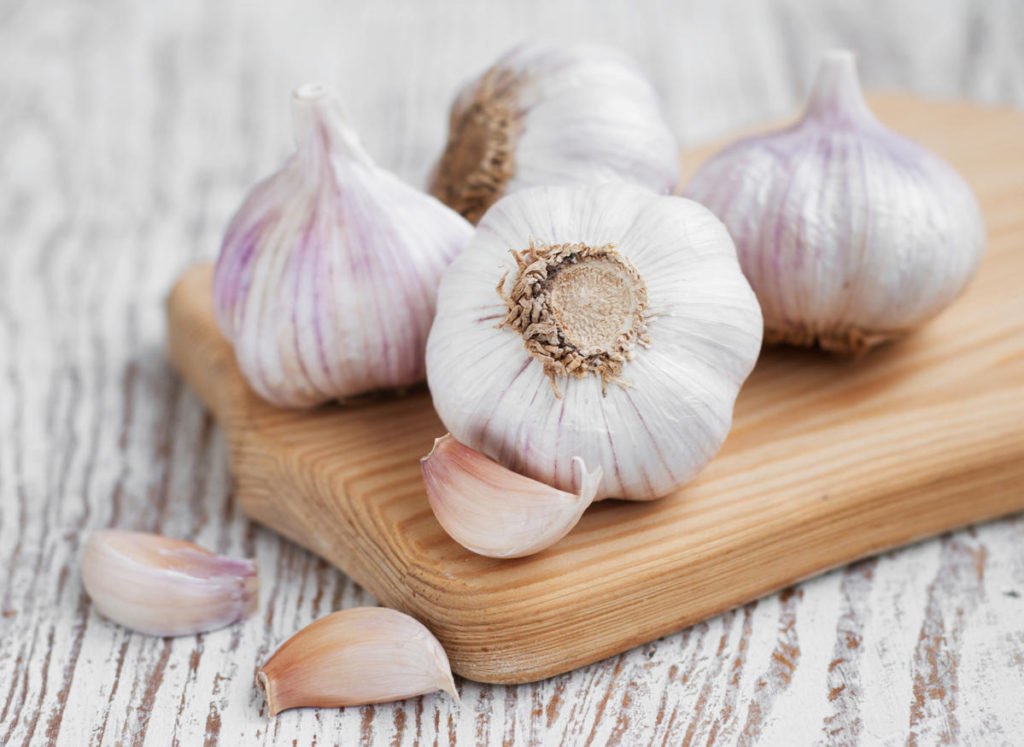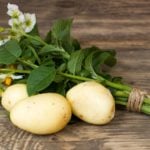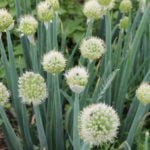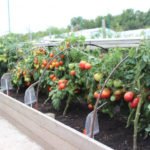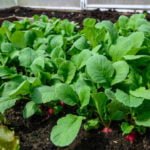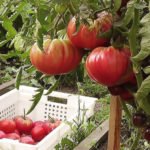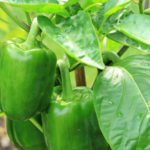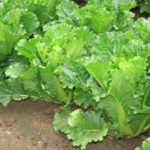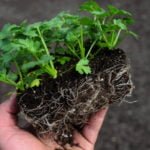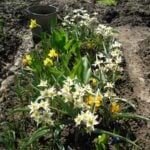So, in this article, we will focus on garlic. There are both fans of garlic and its ardent opponents. The characteristic taste and smell of garlic is difficult to confuse with something.
Garlic was known to the Egyptian pharaoh Tutankhamun, who found it in the form of dried garlic slices in the tomb of the emperor. Since ancient times, garlic has been given a special mystical meaning in different countries. Garlic has strong medicinal properties and is widely used in medicine from the time of Hippocrates to the present day. Today, it is difficult to imagine many dishes without garlic.
The homeland of bulbous plants is South and West Asia. References to garlic are still found in the ancient literature of India and Egypt. Let’s now talk about how to plant and grow garlic.
Garlic is a bulbous plant, a bulb consisting of cloves. The leaves are flat. Garlic has both spicy and sweet varieties. Sweet varieties do not have a burning sensation and have a subtle taste.
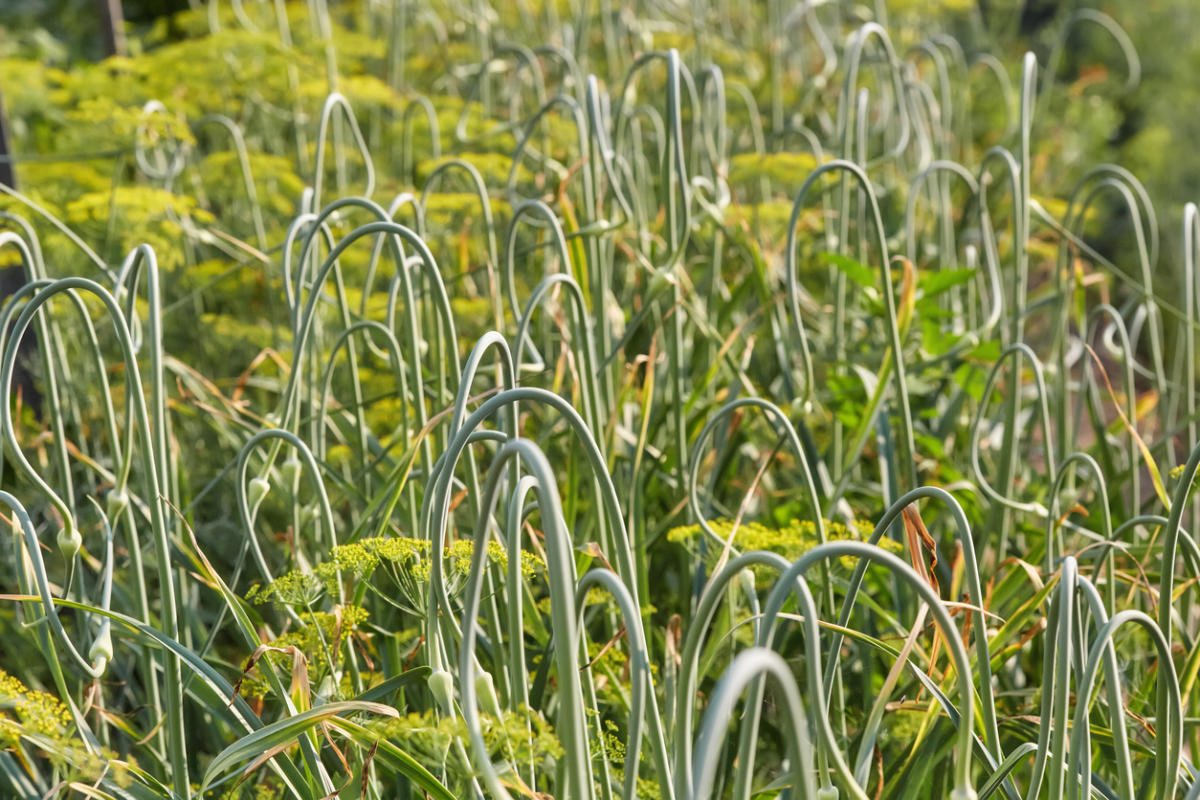
Garlic grown in our gardens is divided into the one that has an “arrow” and the one that does not. Garlic, which gives “arrows”, has a better resistance to weather changes. If garlic does not give an arrow, it is better to plant it in the spring, it is not so productive, but it is better stored.
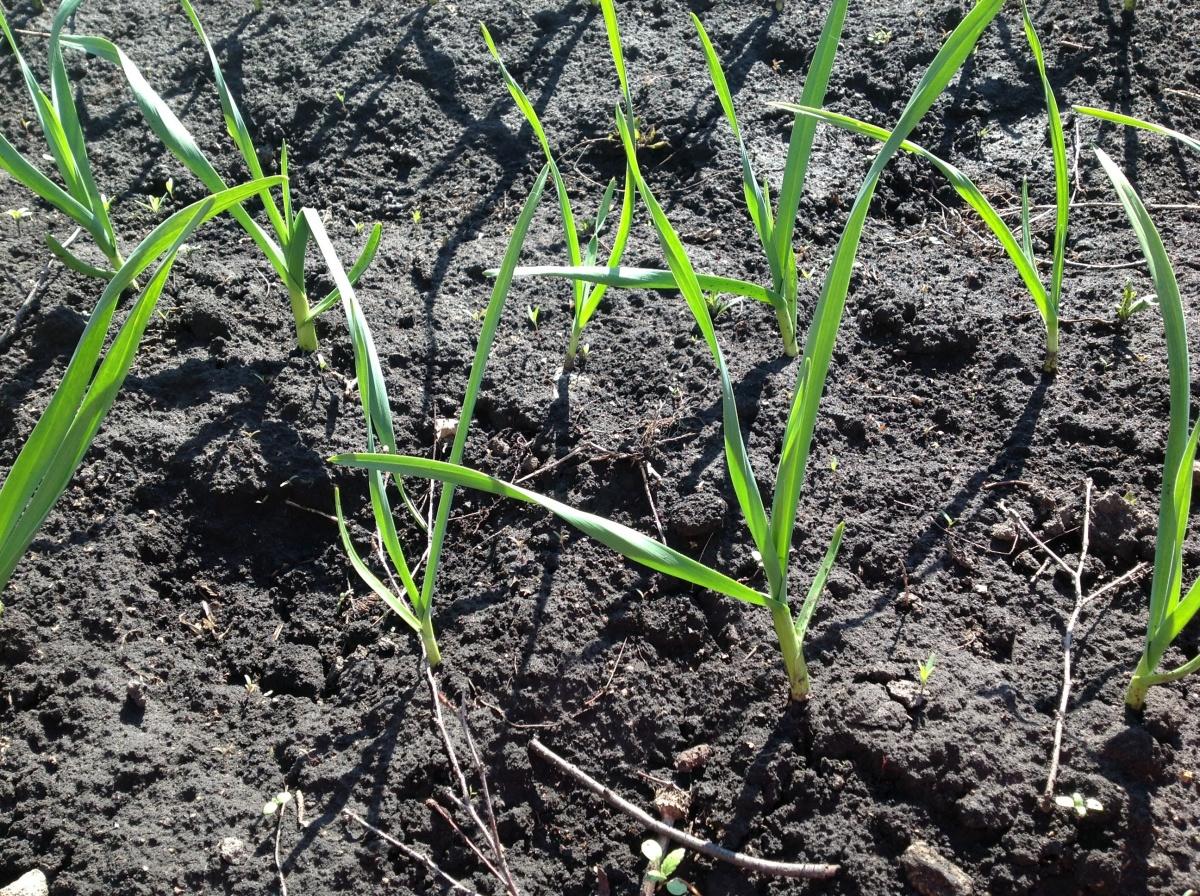
The cultivation of garlic
Garlic likes a sunny place away from trees and shrubs. In shaded areas, the garlic is fine, the taste is unsaturated. There should be no standing water in the place where it grows.
The soil for planting garlic is preferably loamy, not very heavy, sandy loam. Garlic likes a fertile, well-fertilized soil. In the fall, when you dig a vegetable garden, add manure or compost, about 1 kg per square meter, add complex fertilizers.
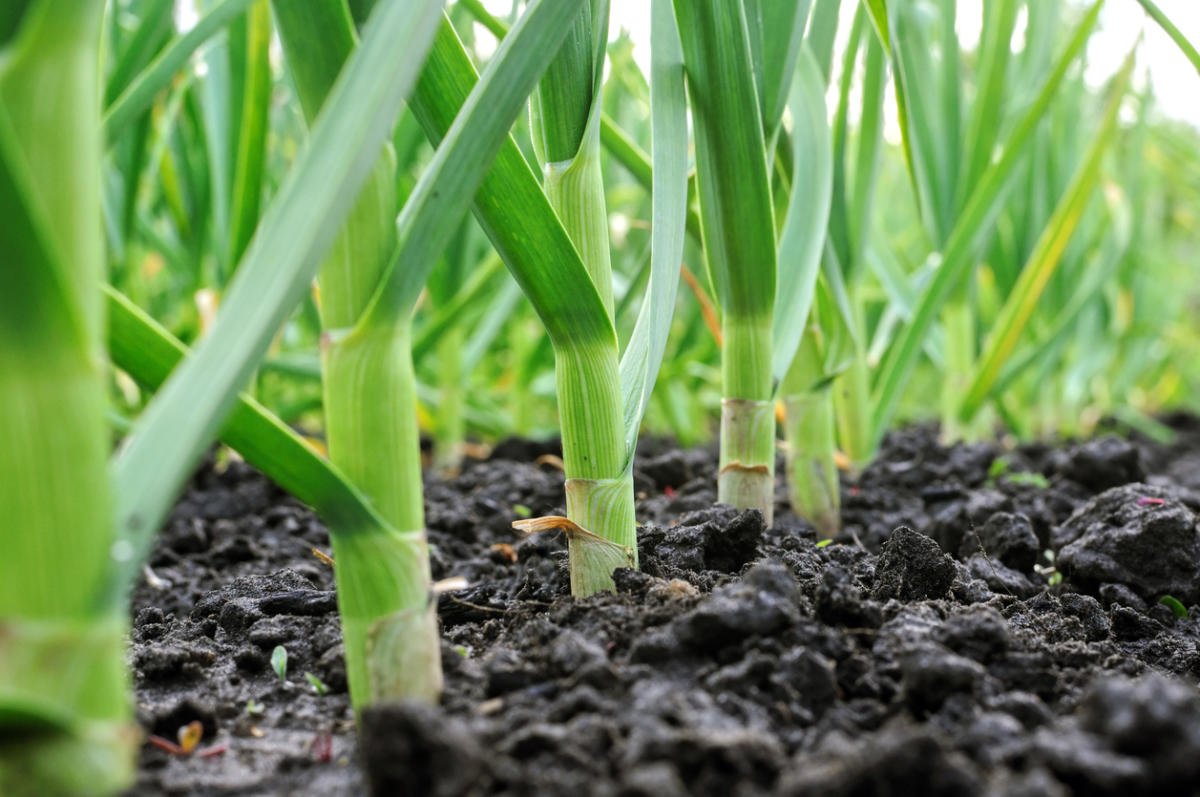
Garlic will grow well if you have previously grown legumes, cucumbers, and cabbage in this place. Do not plant garlic after potatoes and onions, you will not get a good harvest. Planting garlic in the same place after 3 years will protect it from diseases and unwanted pests.
Planting
Before planting, inspect the garlic cloves, they should be completely healthy. You can use the largest cloves from the previous crop or specially grown young “single bulbs” from seeds (more on this below). The prongs are soaked for 30 minutes in a light pink solution of potassium permanganate to disinfect them and protect them from possible diseases.
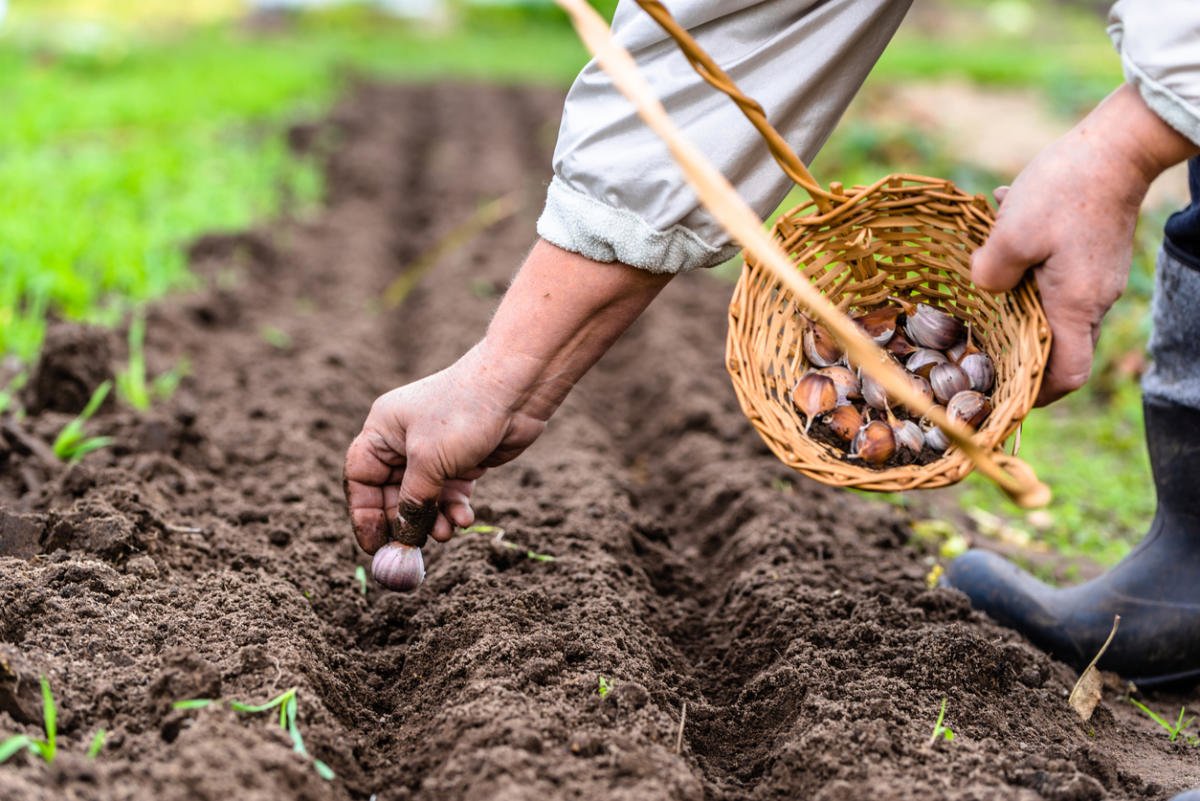
Winter garlic is planted in late September-early October. The distance between the rows should be about 35 cm (13.7 inch), between the teeth in the furrow about 10 cm (3.9 inch). The soil should completely cover the teeth in the range of 5-6 cm (2-2.4 inch), you can mulch, but this year I did not use mulch.
Spring garlic is planted in early spring, the depth of planting can be slightly reduced. After planting, the ridge on top is mulched with peat or humus and watered.
Growing
Garlic can be propagated by cloves of bulbs and inflorescences (spherical umbrella) formed on the arrows. This method is good because it renews the garlic, because the bulbs are often susceptible to disease and can degenerate.
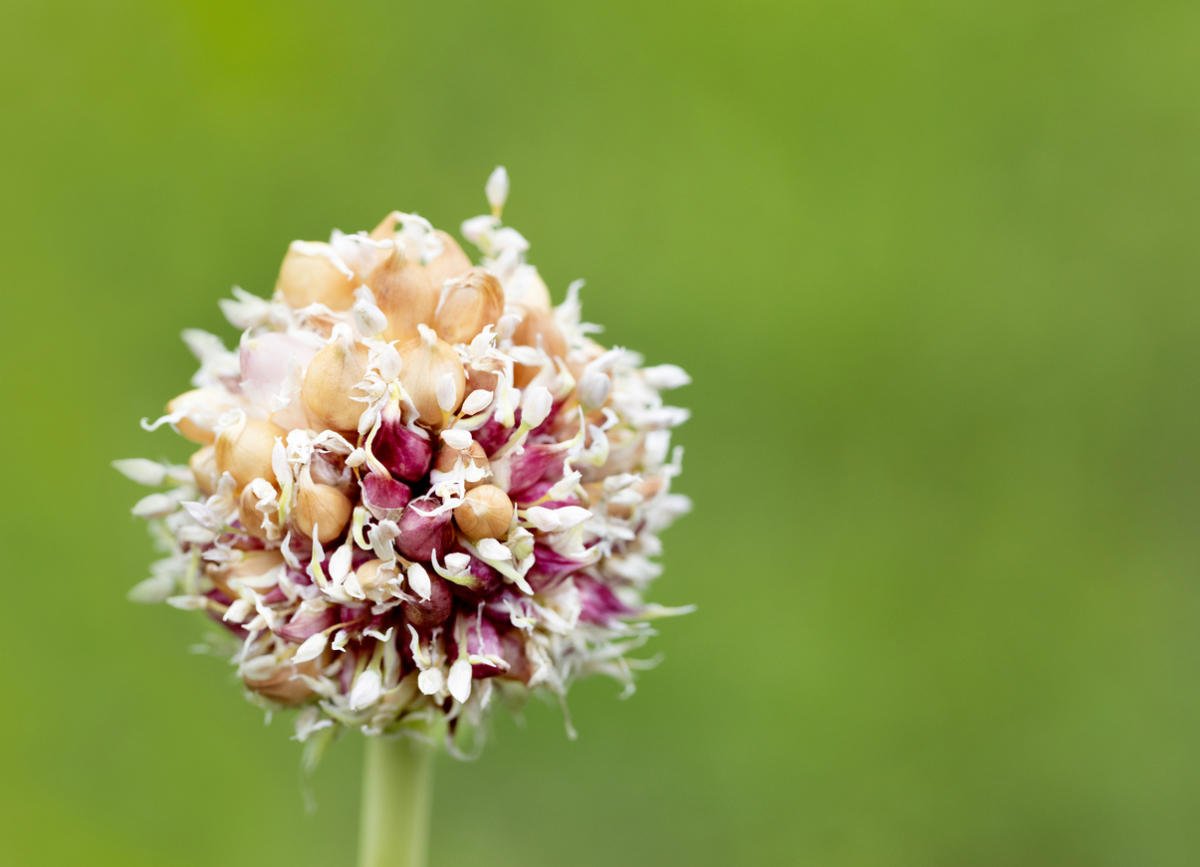
For sowing, collect large inflorescences, trying not to damage them. You can sow in autumn and spring, taking about 90-100 g of seeds per 1 sq. m. They should be collected when the leaves turn yellow, and the stem at the base becomes flat.
Care
In the spring, when the shoots appear, if there is a lack of moisture, the garlic should be watered. After that, periodically water the garlic, but in moderation, to avoid stagnation of water. About a month before the harvest, stop watering the garlic, then it will acquire a taste and aroma, it will not be watery.
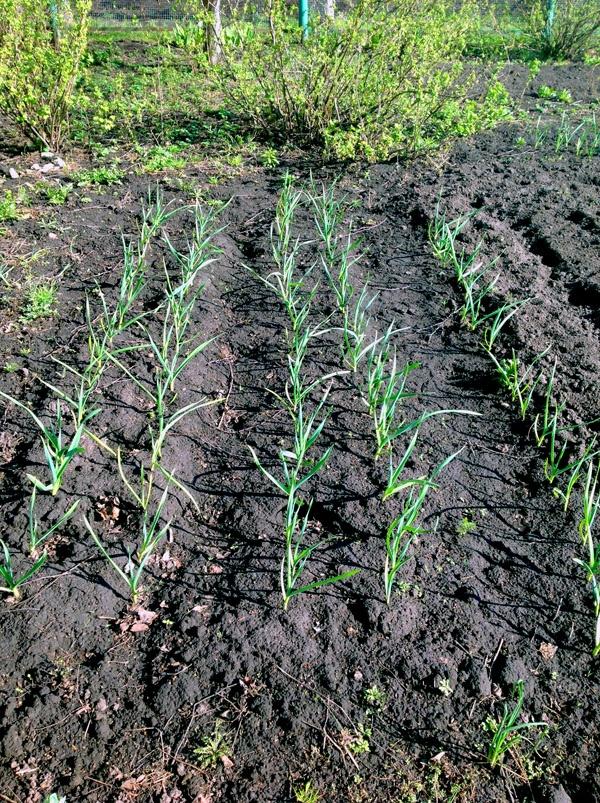
It is recommended to fertilize garlic in the spring and summer, when the bulb begins to grow. Do not forget to loosen the soil and pull out the weeds.
In June (if your garlic is not intended for seeds) for varieties with arrows, you need to remove these arrows. Then all the strength and nutrients go into the bulb. Break off the arrow at the exit from the top of the sheet. Do not pluck it, so as not to damage the plant.
Diseases and pests
Common garlic diseases:
- rusty-black cushions on the leaves, causing early drying of the leaves;;
- mosaic spots of onion and garlic or light green stripes – a viral disease affects the inflorescences and leaves;
- fusarium-a disease in which the bottom of the plant rots;
- white rot-teeth become watery and then rot; the disease affects even when stored;
- black mold develops when storing garlic at a temperature of + 16 °C (60.8°F).
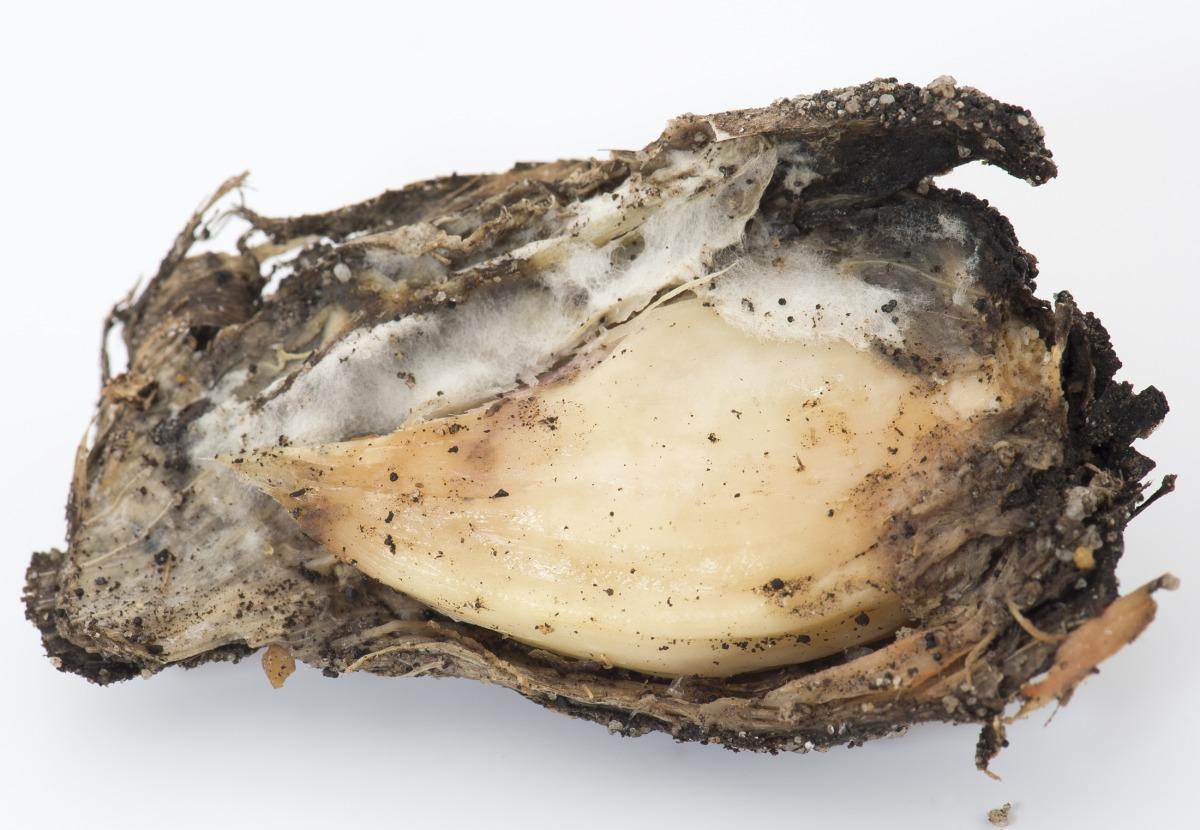
Pests:
- Eumerus strigatus;
- Rhizoglyphus echinopus;
- Acrolepiopsis assectella;
- Delia antiqua;
- Ditylenchus;
- Ceuthorrhynchus jakovlevi Schultze.
The harvest
If the upper garlic leaves turn yellow by 2/3, the lower ones dry out, then it’s time to remove the garlic. But after germination, it should take at least 3.5 months. Early-harvested garlic is poorly stored. Spring garlic is harvested when the leaves turn yellow, usually in September.
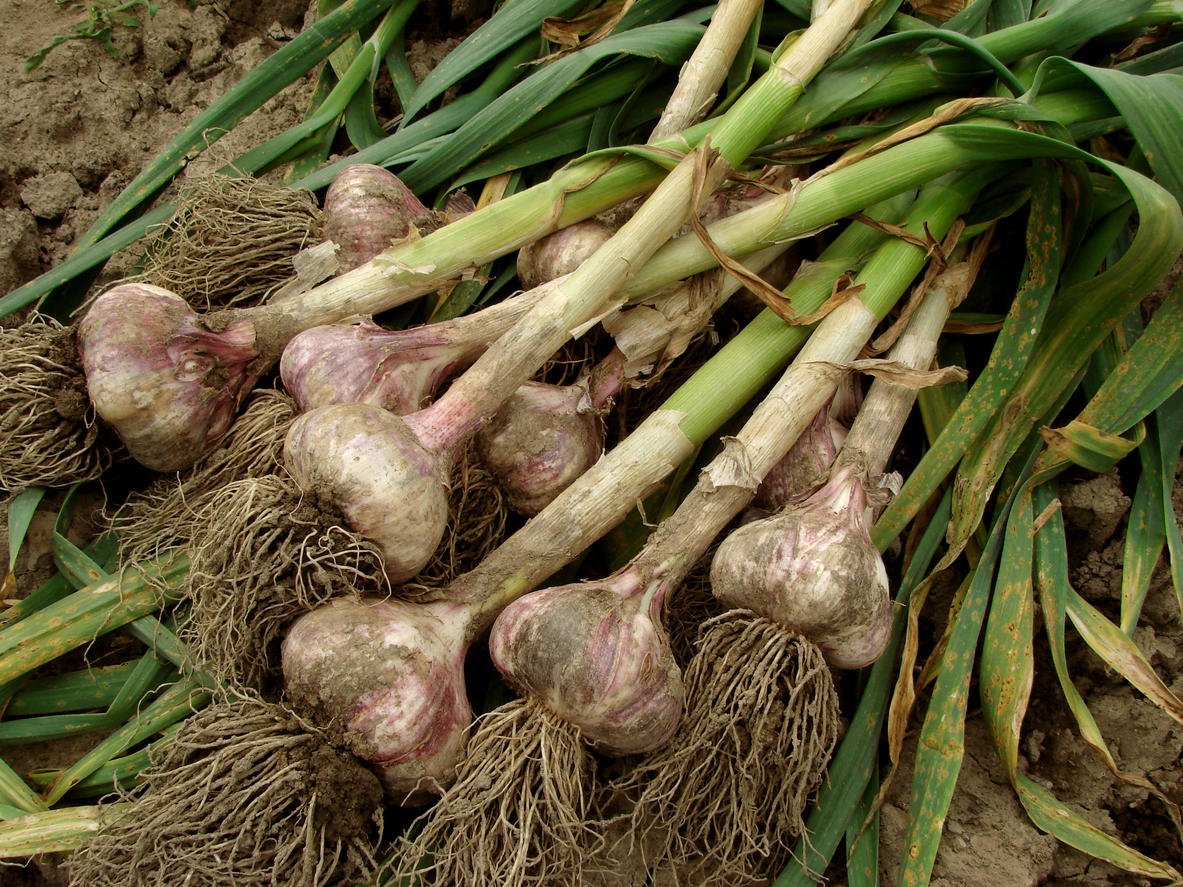
Dense garlic heads should not hold the teeth, the film covering the teeth should be separated. If in doubt, before digging, check the scales on a few bulbs sitting in the ground, if hard-the garlic is ready for harvesting.
Dig out the garlic and pull it out of the ground by the tops. After you have dug up the garlic, dry it in the air on the bed, it is best to put it in rows. When it dries, clean it from dirt, transfer it to a bright, warm, well-ventilated room. After a week, the garlic is cut from the root and tops, then dried for another 2-3 weeks.
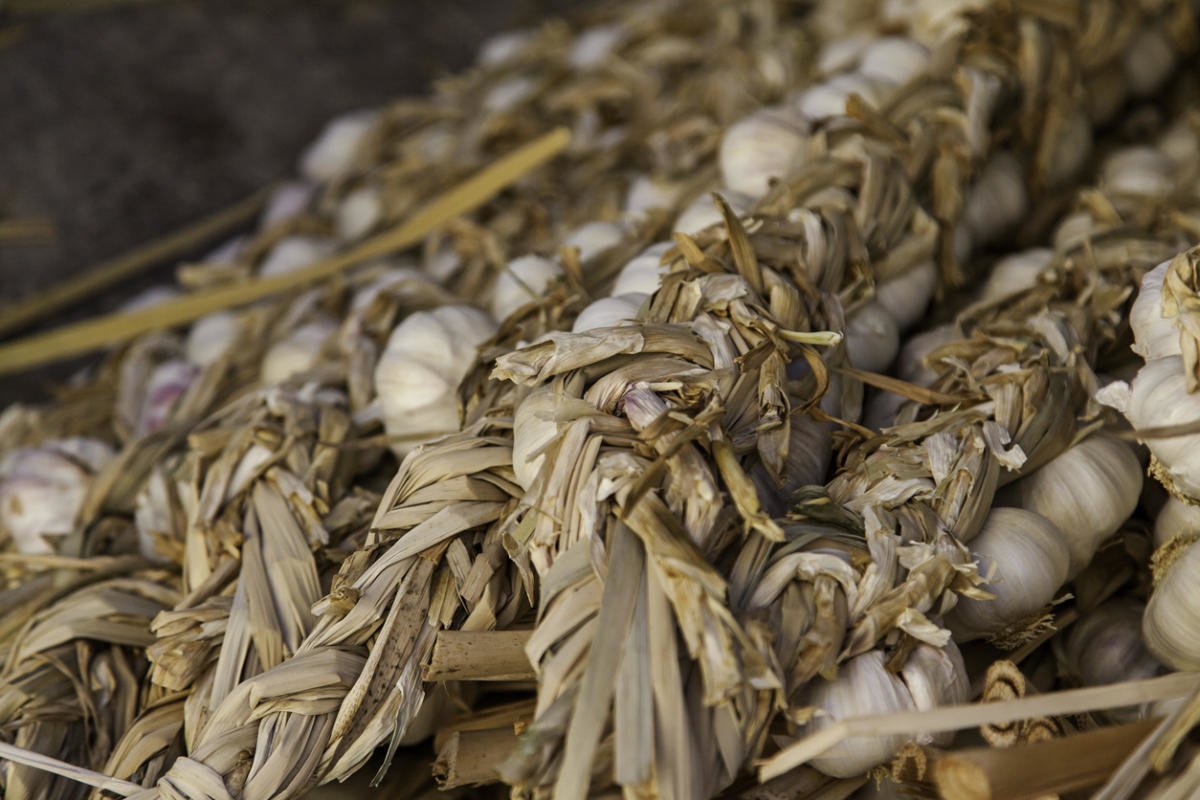
I always cut off the tops, but you can also make a braid out of it and hang garlic as an edible decoration.
Garlic for food should be stored at a temperature of -2 to +2 °C (28.4-35.6°F). Garlic seeds should be stored at a temperature of about 0 °C (32°F). At zero temperature (32°F), the garlic dries out and begins to hurt.
